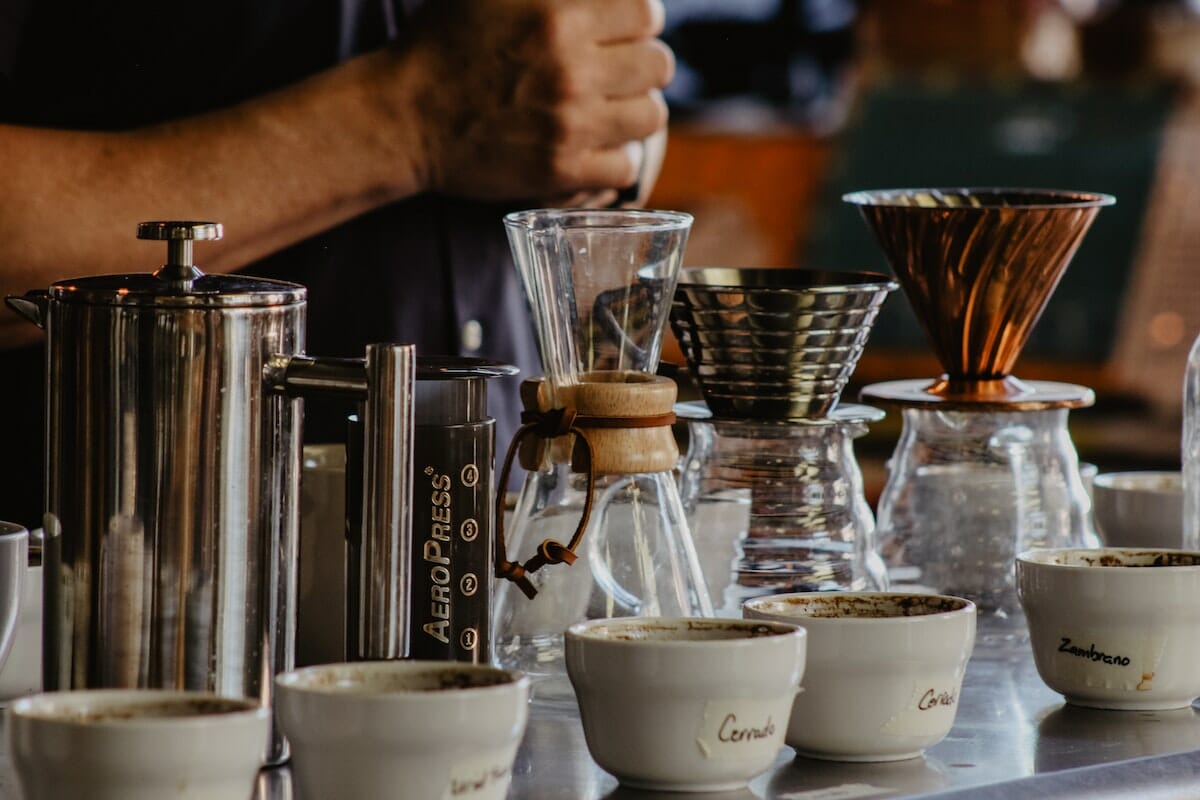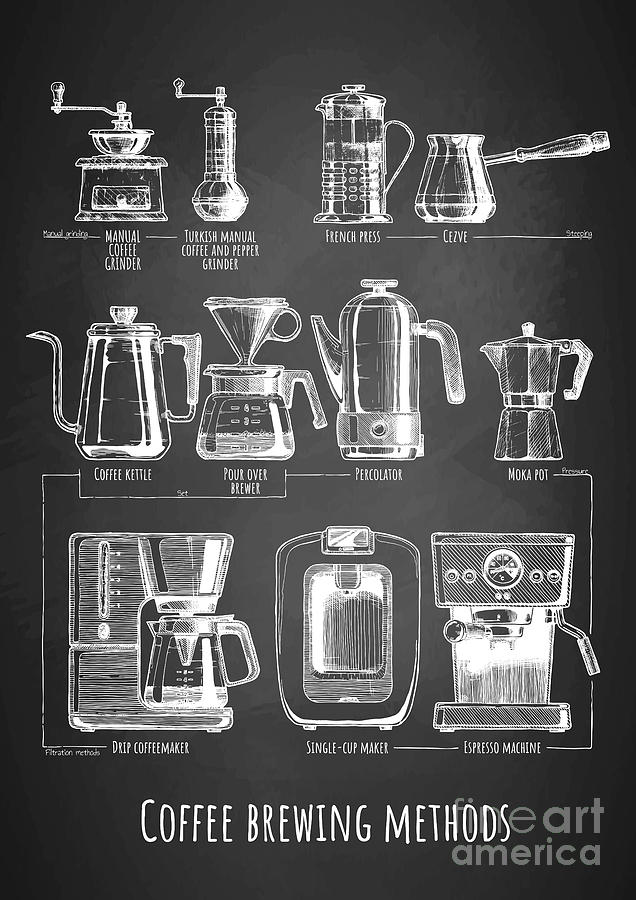Coffee Brewing Methods Debunked: From French Press to Cold Brew
Coffee Brewing Methods Debunked: From French Press to Cold Brew
Blog Article
Recognizing Different Coffee Brewing Techniques for a Richer Flavor Experience
A thorough understanding of numerous coffee brewing approaches can profoundly affect your taste experience, exposing the complex subtleties of this beloved beverage. As you think about which approach best suits your taste choices, the question continues to be: how do these techniques influence the final mug, and which might boost your coffee experience to brand-new heights?
Drip Coffee Machine
While many coffee fanatics value the nuances of various brewing techniques, the drip coffee machine stays a staple in offices and homes as a result of its simplicity and performance. This appliance runs by home heating water and enabling it to stream via coffee grounds, extracting oils and flavors, which after that trickle right into a pitcher listed below.
The drip coffee machine is favored for its capability to make numerous mugs simultaneously, making it optimal for active early mornings or events. Users can quickly personalize the toughness of their coffee by readjusting the amount of coffee grounds made use of or selecting a brew strength establishing located in lots of modern-day machines. Furthermore, programmable functions permit individuals to set a timer, guaranteeing a fresh pot of coffee prepares upon waking.
Upkeep is relatively simple, as the majority of drip coffee makers need regular cleaning to get rid of mineral buildup. Numerous versions are additionally outfitted with functions such as auto shut-off, which enhances safety and power performance. Inevitably, the drip coffee machine uses a reputable and straightforward choice for those seeking a constant and enjoyable coffee experience without the complexities of more intricate brewing methods.

French Press
The French press supplies a distinct brewing experience that contrasts dramatically with the automatic procedure of a drip coffee maker. This guidebook method enables for an intimate communication with the coffee-making procedure, providing individuals better control over various criteria, such as steeping time, coffee-to-water proportion, and grind dimension.
To make coffee using a French press, coarsely ground coffee beans are soaked in hot water for approximately four minutes. This immersion technique extracts rich oils and flavors from the coffee, leading to a robust drink that highlights the nuances of the beans used. The steel or nylon mesh filter of the French press enables important oils to remain in the mixture, adding to its durable taste profile.
When utilizing a French press, it is vital to focus on the developing time and water temperature level, as these factors substantially influence the final preference. Trial and error with different coffee ranges and soaking periods can result in a tailored taste experience. In general, the French press is a obtainable and fulfilling approach for coffee lovers looking for to deepen their gratitude for the intricacies of their favorite beverage.
Pour-Over Techniques
Pour-over strategies boost the coffee developing experience by allowing precise control over every element of the procedure, from water temperature to putting method. This method includes by hand pouring warm water over coffee grounds in a filter, typically located in a dripper, which enables ideal removal of flavors.
To start, selecting the right coffee grind is vital; a tool to medium-fine grind works best to guarantee appropriate water flow and removal (coffee brewing methods). Next, water temperature should ideally vary between 195 ° F and 205 ° F, as this array draws out the ideal tastes without scalding the coffee
The pouring strategy also plays a vital duty. A sluggish, round movement when saturating the grounds can help evenly extract oils and flavors. It's typically a knockout post suggested to allow the coffee to grow for 30 secs after the first pour, which lets co2 escape and boosts flavor development.
Espresso Equipments
For those seeking a different yet equally fulfilling developing experience, coffee equipments use a distinct approach of coffee preparation that highlights stress removal. This process involves compeling warm water with finely-ground coffee at approximately 9 bars of stress, resulting in a concentrated shot of coffee that showcases abundant flavors and fragrances.

The quality of coffee is influenced by several factors, consisting of work dimension, dosage, water temperature level, and extraction time. Attaining the perfect coffee shot needs method and attention to information. Furthermore, the coffee functions as a base for various coffee drinks, such as lattes, coffees, and Americanos, making it a functional selection for coffee fanatics.

Cold Brew Methods
Cold brew coffee has obtained popularity for its smooth, low-acidity account and rejuvenating taste, making it a perfect option for cozy weather condition or those conscious typical developing approaches - coffee brewing methods. The process of cool developing usually involves soaking coarsely ground coffee beans in cool or room temperature level water for a prolonged duration, generally 12 to 24-hour. This approach extracts tastes differently than warm water, leading to an abundant, complex brew that highlights chocolatey and fruity notes
There are different cool mixture methods readily available, including immersion and drip developing. The immersion method is one of the most straightforward; simply incorporate coffee and water in a container, allow it high, and then filter out the premises. On the other hand, the drip approach utilizes a specific coffee machine to slowly leak water through coffee premises, permitting an extra regulated extraction procedure.
Regardless of the approach chosen, the coffee-to-water ratio is essential, generally suggested at 1:4 for a focused mixture that can be watered down with water or milk prior to offering (coffee brewing methods). Cold brew can be offered over ice, combined with flavored syrups, or used as a base for numerous coffee drinks, advice providing convenience and a special taste experience
Conclusion
In conclusion, exploring various coffee developing approaches substantially enriches the flavor experience. Engaging with these diverse brewing processes not just boosts recognition for coffee's intricacy however also encourages people to tailor their coffee satisfaction according to personal choices.
Customers can quickly personalize the stamina of their coffee by readjusting the quantity of coffee grounds made use of or picking a brew stamina establishing found in lots of modern equipments. Ultimately, the drip coffee manufacturer provides a user-friendly and dependable alternative for those looking for a regular and pleasurable coffee experience without the intricacies of even more fancy developing techniques.
To brew coffee making use of a French press, coarsely ground coffee beans are steeped in hot water for around four minutes. On the other hand, the drip method utilizes a specific coffee manufacturer to slowly leak article water through coffee premises, allowing for a much more regulated removal procedure.
Involving with these varied brewing processes not only boosts admiration for coffee's complexity but also encourages individuals to tailor their coffee satisfaction according to personal preferences.
Report this page